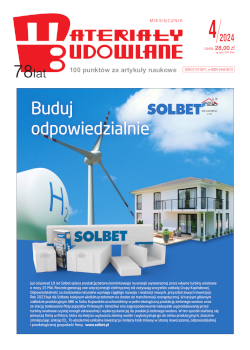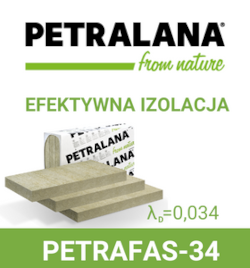Open Access (Artykuł w pliku PDF)
Short-term creep test of shear adhesive joints in Timber-Concrete Composites
mgr inż. Klaudia Śliwa-Wieczorek, Politechnika Krakowska, Wydział Inżynierii Lądowej
ORCID: 0000-0002-4148-1491
dr hab. inż. Wit Derkowski, prof. PK, Politechnika Krakowska, Wydział Inżynierii Lądowej
ORCID: 0000-0001-6133-3624
dr inż. Eva Binder, Linnaeus University, Växjö, Sweden
ORCID: 0000-0002-5699-4492
Adres do korespondencji: Ten adres pocztowy jest chroniony przed spamowaniem. Aby go zobaczyć, konieczne jest włączenie w przeglądarce obsługi JavaScript.
DOI: 10.15199/33.2024.02.02
Oryginalny artykuł naukowy
Streszczenie. W artykule przedstawiono wyniki badań krótkotrwałych i reologicznych przyrostu odkształceń w teście wypychania (push-out test) w przypadku dwuzakładkowych połączeń klejonych. Łącznie przebadano 15 próbek złożonych z elementów wykonanych z drewna klejonego krzyżowo (CLT) oraz prefabrykowanych płyt betonowych. Połączenie między elementami wykonano jako klejone z użyciem innowacyjnych prefabrykowanych złączy podatnych o grubości 3 mm, w trzech konfiguracjach powierzchni klejenia. Celem badań było określenie wpływu geometrii połączenia klejonego na początkowy przyrost odkształceń w czasie. Wykazano, że pełzanie przebiega nieliniowo w czasie t1 = 800 s niezależnie od powierzchni klejenia, a następnie zwiększa się w sposób liniowy. W przeprowadzonych badaniach złączy pasmowych uzyskano przyrost początkowego pełzania o ok. 10% mniejszy w przypadku złączy ułożonych w kierunku obciążenia niż w kierunku prostopadłym. Wykazano również, że wartości pełzania nie są wprost proporcjonalne do wielkości naprężenia ścinającego.
Słowa kluczowe: pełzanie; kompozyty drewniano-betonowe (TCC); dwuzakładkowe testy ścinania; testy wypychania; poliuretanowe złącza podatne.
Abstract. This paper presents the results of a study of short-term rheological strain increments in a push-out test for double-lap glued joints. A total of 15 specimens consisting of cross laminated timber (CLT) elements and precast concrete slabs were tested. The joint between the elements was made as a glued joint using innovative 3mmthick prefabricated flexible joints in three bonding configurations. The aim of the study was to investigate the influence of the adhesive joint geometry (typeAwith 600 cm2 glue, B – 200 cm2 in strips parallel to the load axis and C – 200 cm2 in strips in the perpendicular direction) on the initial deformation increase over time. Creep phenomenon was shown to be nonlinear for an initial time range of t1 = 800 s regardless of the adhesive area, and then to increase in a linearmanner. In the tests carried out on strip joints, the increments of initial creep were obtained to be about 10% smaller for joints arranged in the load direction than for those arranged in the perpendicular one. It was also shown that the creep values are not directly proportional to the magnitude of the shear stress.
Keywords: creep; Timber-Concrete Composites (TCC); double shear lap test; push-out test; polyurethan flexible joint.
Literatura
[1] Xie Z, Hu X, Du H, Zhang X. Vibration behavior of timber-concrete composite floors under human-induced excitation. Journal of Building Engineering. 2020; https://doi.org/10.1016/j.jobe. 2020.101744.
[2] Shephard AB, Fischer EC, Barbosa AR, Sinha A. Fundamental behavior of timber concrete- -composite floors in fire. Journal of structural engineering. 2021; https://doi.org/10.1061/(ASCE) ST. 1943-541X. 00028.
[3] Oh JW, Park KS, Kim HS, Kim I, Pang SJ, Ahn KS, Oh JK. Comparative CO2 emissions of concrete and timber slabs with equivalent structural performance. Energy and Buildings. 2023; https://doi.org/10.1016/j.enbuild. 2022.112768.
[4] SzumigałaM, ChybińskiM, Polus Ł. Innowacyjne konstrukcje zespolone. Przegląd Budowlany. 2017, 88.
[5] PN EN 1995 1-1:2010, Eurokod 5 – Projektowanie konstrukcji drewnianych – Część 1-1: Postanowienia ogólne – Reguły ogólne i reguły dotyczące budynków.
[6] PN-EN 26891:1997 – Konstrukcje drewniane – Złącza na łączniki mechaniczne – Ogólne zasady określania wytrzymałości i odkształcalności.
[7] Fragiacomo M, Lukaszewska E. Time-dependent behaviour of timber–concrete composite floors with prefabricated concrete slabs. Engineering Structures. 2013; https://doi.org/10.1016/j. engstruct. 2013.03.031.
[8] Shi B, Liu W, Yang H. Experimental investigation on the long-term behaviour of prefabricated timber-concrete composite beams with steel plate connections. Construction and BuildingMaterials. 2021; https://doi.org/10.1016/j.conbuildmat. 2020.120892.
[9] NieY, Valipour HR. Experimental and numerical study of long-term behaviour of timber-timber composite (TTC) connections. Construction and Building Materials. 2021; https://doi. org/10.1016/j. conbuildmat. 2021.124672.
[10] Frohnmüller J, Fischer J, Seim W. Full-scale testing of adhesively bonded timber-concrete composite beams.Materials and Structures. 2021; 54: 1 – 21.
[11] Tannert T; Endacott B; BrunnerM, Vallée T. Long-term performance of adhesively bonded timber-concrete composites. International Journal of Adhesion and Adhesives. 2017; https://doi. org/10.1016/j. ijadhadh. 2016.10.005.
[12] Augeard E, Ferrier E,Michel L.Mechanical behavior of timber-concrete composite members under cyclic loading and creep. Engineering Structures. 2020; https://doi.org/10.1016/j.engstruct. 2020.110289.
[13] Irfan-ul-Hassan M, Pichler B, Reihsner R, Hellmich C. Elastic and creep properties of young cement paste, as determined fromhourly repeated minute-long quasi-static tests. Cement and Concrete Research. 2016; https://doi.org/10.1016/j. cemconres. 2015.11.007.
[14] KönigsbergerM, Irfan-ul-HassanM, Pichler B, Hellmich C. Downscaling based identification of nonaging power-law creep of cement hydrates. Journal of Engineering Mechanics. 2016; https://doi.org/10.1061/(ASCE)EM.1943- 7889.0001169.
[15] PN-EN 338:2016 – Drewno konstrukcyjne – Klasy wytrzymałości.
[16] Binder E, Derkowski, W, Bader TK. Development of creep deformations during service life: a comparison of CLT and TCC floor constructions. Buildings. 2022; https://doi. org/10.3390/buildings12020239
[17] Śliwa-Wieczorek K, Derkowski W, Binder E, Kwiecień A, Zając B, Halilovic E, Lotinac S. Shear Stiffness and Capacity of PolyUrethane Flexible Joint in Timber – Concrete Composites, Springer Nature Switzerland. 2023; https://link. springer. com/chapter/10.1007/978-3-031-32519- 9_46.
Przyjęto do druku: 19.01.2024
Materiały Budowlane 2/2024, strona 6-10 (spis treści >>)





























